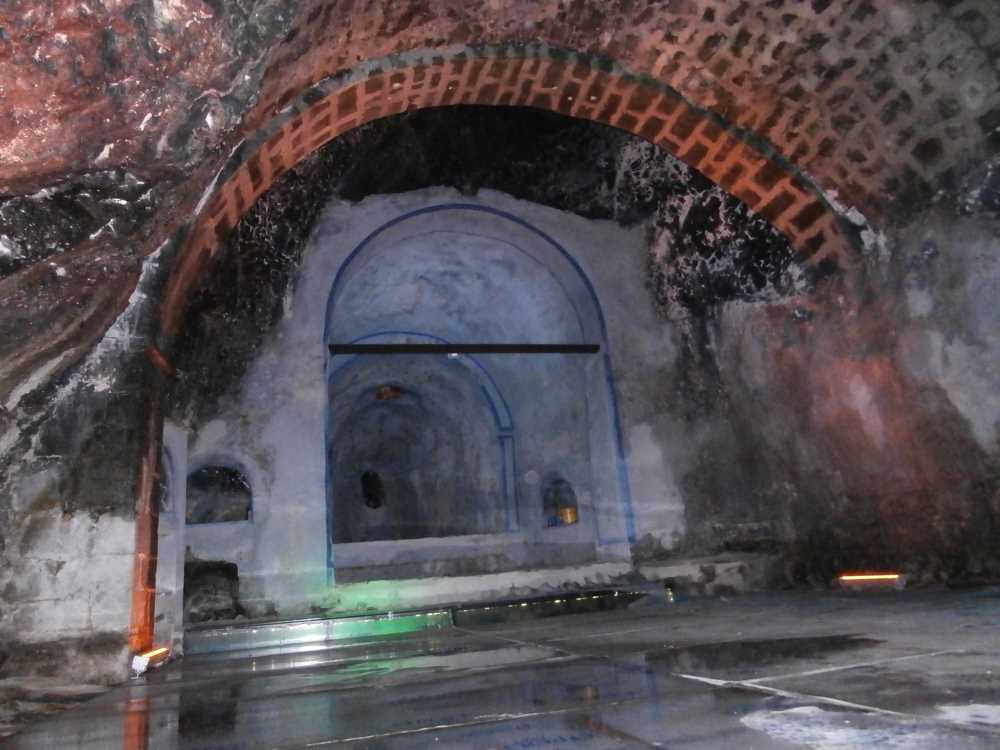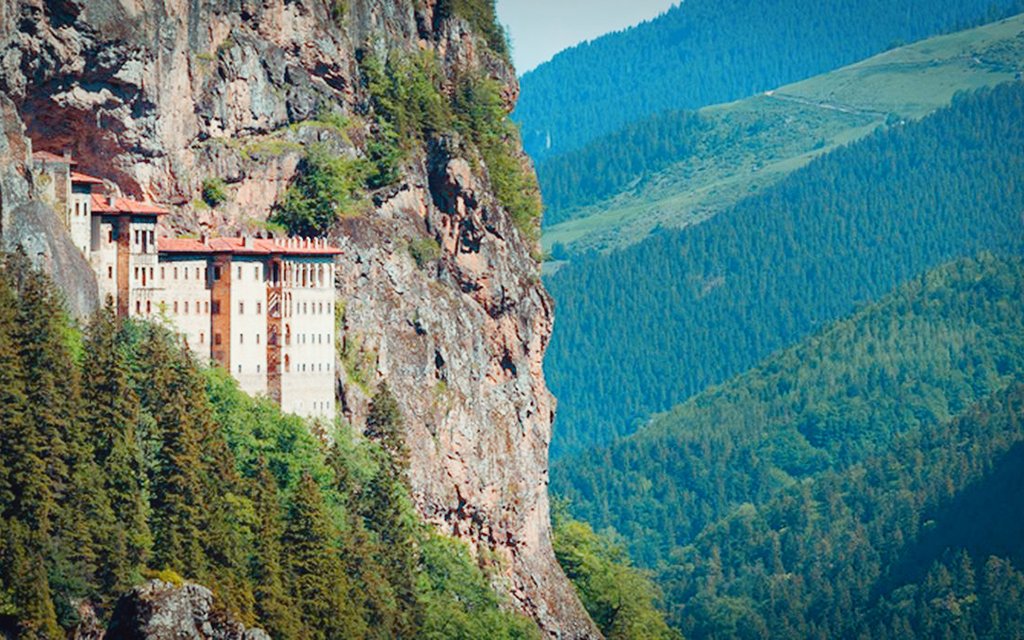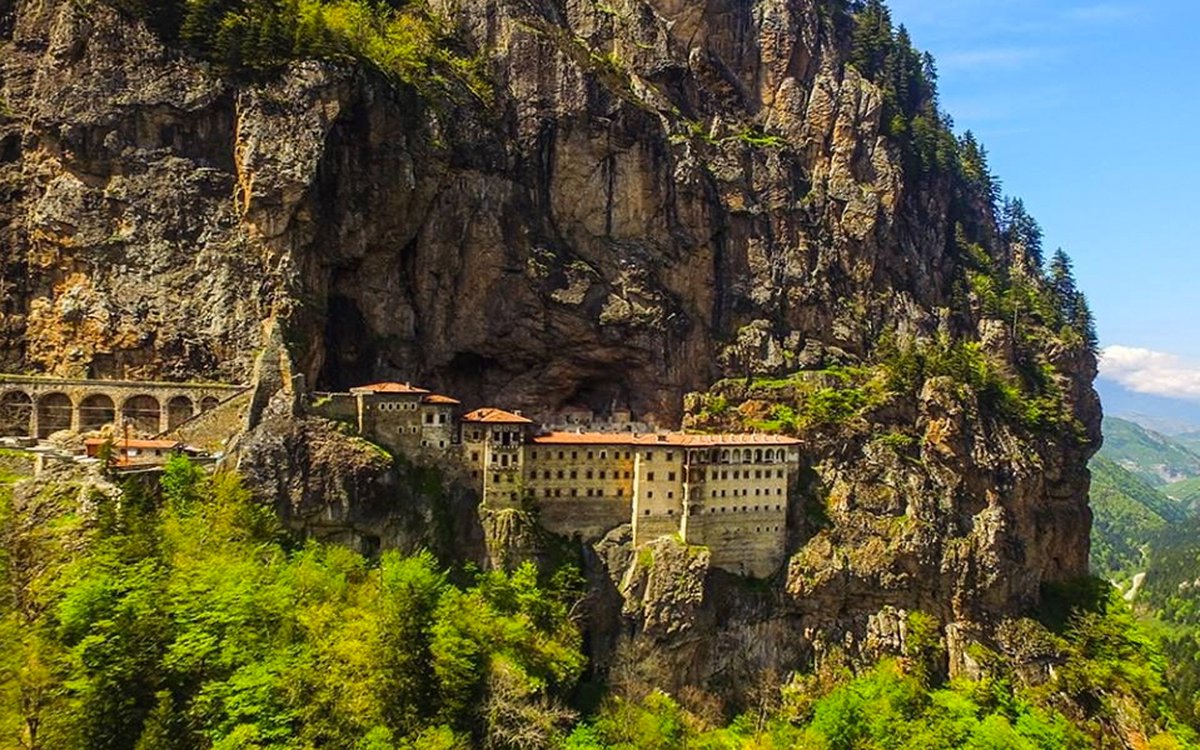If you've ever found your way to Trabzon, I can almost hear that famous question echoing in your mind: How do you get up to Sumela, are those stairs really that hard, and what's actually waiting for you inside? This legendary structure, clinging to the foothills of Karadağ Mountain like an eagle's nest defying the clouds, is more than just a monastery; it's a monument where history and faith are carved into stone, a dream made real. Don't worry, you're not alone on this journey. I'm here to guide you through every moment, from the first step into the valley to that breathtaking view from the summit, covering the top things to do in Sumela Monastery. Fasten your seatbelts, because this isn't just a trip—it's an unforgettable climb through time and nature!
Reach the monastery built on the steep slope of Altındere Valley
The road to Sumela is an experience as captivating as the monastery itself. As you leave Trabzon's city center or the town of Maçka, the urban landscape slowly fades, and you suddenly find yourself inside the famous green tunnels of the Black Sea. The roaring sound of the Coşandere stream accompanies you along the way, and the cool, pine-scented air that hits your face when you open the car window prepares you for a different world.
The real adventure begins when you reach the entrance of the National Park. Here, you leave the modern world and the comfort of your car behind, as private vehicles are not allowed any further. After parking your car, you head for the minibuses that will take you closer to the monastery. Think of this system not as a requirement, but as a modern interpretation of the ancient pilgrimage. Just like the pilgrims centuries ago, you are now beginning to exert some effort to reach your destination.
The minibus takes you to a point where a wooden platform path begins. From here on, it's a trail with plenty of stairs where you'll fill your lungs with fresh oxygen. This is the most exciting part; you can't see the monastery from the path, and at every turn, you wonder, Will I see it now? And then, around a bend, it suddenly appears. Majestic and incredible, Sumela Monastery is carved like a jewel into the steep cliff face. At that moment, you realize it was worth all the effort. This valley and monastery will prove to you at first glance why they are at the top of every list of(https://www.yerelrehber.com/en/city/trabzon).

Examine the historical frescoes inside and outside the Main Rock Church
When you step through the monastery's gate, you are greeted by the soul of Sumela: the frescoes on its walls. These are not just simple decorations; they are visual encyclopedias from centuries ago, telling stories from the Bible to monks and visitors who couldn't read. The walls of Sumela are not a canvas painted in a single session but a parchment on which new stories have been written over the centuries. Sometimes, beneath one fresco, an older and more valuable one is discovered.
The most impressive scenes await you on the outer wall of the Main Rock Church, the heart of the monastery. This area is like an open-air gallery. At the very top, the Creation of the World is depicted in four scenes. In these scenes, you can spot iconographic details like the divine halo with the Alpha and Omega letters, unique to Jesus, and the peacock, a symbol of immortality. You might even smile when you see the sun drawn as a smiling human face.
Just below, in the next row, the story from the Creation of Adam and Eve to their Expulsion from Paradise is told in six scenes. The expressions of shock and fear on their faces as they are cast out after eating the forbidden fruit are a testament to how powerfully the artists of that era could convey emotion. Every figure, every color on these walls whispers something to you from centuries past.
When you enter the cave, the heart of the church, the atmosphere changes completely. After the brightness outside, the coolness of the rock, the dim light, and the frescoes covering the ceiling—worn by time but still magnificent—welcome you. Here, you can see the layers of art from different periods with your own eyes and touch the living, breathing history of the monastery.

Watch the enchanting view of the valley from the monastery's courtyard
As you step out into the main courtyard, still dizzy from the sacred stories told by the frescoes, you encounter another miracle: the breathtaking view of the Altındere Valley. It feels, quite literally, like standing on the edge of the world. Below, at a depth of about 300 meters, the valley stretches out like a green sea gently waving in the wind. This view makes you feel both powerful, like a ruler of the world, and tiny and humble in the face of nature. Perhaps this was the divine and worldly balance the monks sought for centuries.
Looking around from the courtyard, you get a better sense of how large and complex the monastery is. A total of 72 rooms, carved into the rocks and arranged in 5 levels, help you imagine the vibrant life that once existed here. The cells where monks lived, the kitchens, the library, and the guest rooms... they all carry the traces of a community that sustained this incredible structure. The remains of the massive aqueducts that brought water to the monastery, leaning against the hillside, are a testament to the engineering genius of the time.
Take a moment here to just watch the view. Listen to the sound of the birds, the murmur of the stream rising from the valley, and the whisper of the wind. This stunning panorama from Sumela will whisper to you why it holds such a special place among the(https://www.yerelrehber.com/en/explore/things-to-do/blacksea-plateaus). This is the moment you will capture the most unforgettable photograph of your trip, not just with your camera, but with your memory.

While You're Here...
Though it's hard to leave the magic of Sumela behind, your adventure doesn't have to end here. Maçka and its surroundings are full of wonders waiting to be discovered.
Vazelon Monastery: Be sure to visit Vazelon, known as Sumela's mysterious older brother. Even older than Sumela, and rumored to have funded Sumela's construction with its revenues, this monastery is less known, more ruined, but perhaps for that reason, has a much more authentic atmosphere. Wandering among these ruins, which nature is on the verge of swallowing, will make you feel like an explorer.
Hamsiköy: The most delicious way to reward yourself after a day of history and climbing is to stop by Hamsiköy. With its Alpine-like scenery, lush plateaus, and charming wooden houses, it's like a village straight out of Heidi. While you're here, don't leave without trying the famous Hamsiköy rice pudding—thick, creamy, and full of hazelnuts. A bowl of this dessert against the scenic backdrop will be the sweetest memory of your trip.
Frequently Asked Questions (FAQ)
1. How much is the entrance fee to Sumela Monastery, and is the Museum Pass valid? This is one of the most confusing topics because the total cost consists of three separate payments: 1) The entrance fee for a vehicle into Altındere National Park, 2) The shuttle fee from the parking lot to the monastery (per person, round trip), and 3) The monastery's own entrance fee. Prices are updated frequently, so giving an exact figure can be misleading. However, the most important piece of information is this: if you have a Museum Pass Türkiye, you do not pay the monastery's entrance fee, which is a big advantage! Everyone pays the other two fees (national park and shuttle).
2. Is the climb to the monastery difficult? Is it suitable for children or the elderly? It used to be much more difficult, but now, thanks to the shuttles, the most strenuous part of the journey is skipped. Still, after getting off the shuttle, you need to climb a considerable number of stairs to reach the monastery entrance. Although the path is well-maintained, it can be a bit tiring for those with walking difficulties, very young children, or elderly visitors. It's best to take your time and rest along the way.
3. What is the best time to visit Sumela Monastery? Late spring and summer (May-August) are when the valley is at its greenest and the weather is most pleasant. However, in autumn, the yellow and red leaves of the trees add a unique beauty to the landscape. If you encounter foggy and misty weather, don't be disappointed; the view of Sumela Monastery in the fog creates a very mystical and photographic atmosphere.
Source: Before planning your visit, be sure to check the official website of the T.R. Ministry of Culture and Tourism (https://www.ktb.gov.tr/EN-113781/sumela-monastry.html) for the most up-to-date entrance fees, visiting hours, and any announcements.


 English
English Türkçe
Türkçe